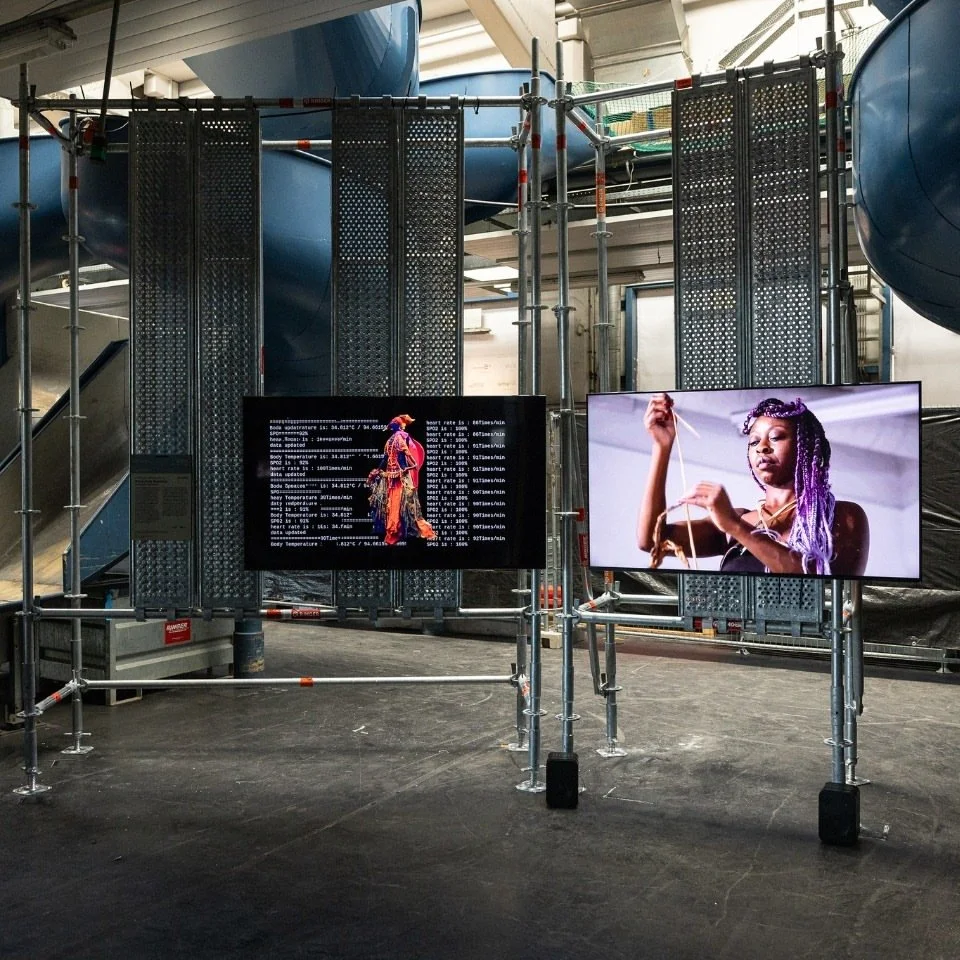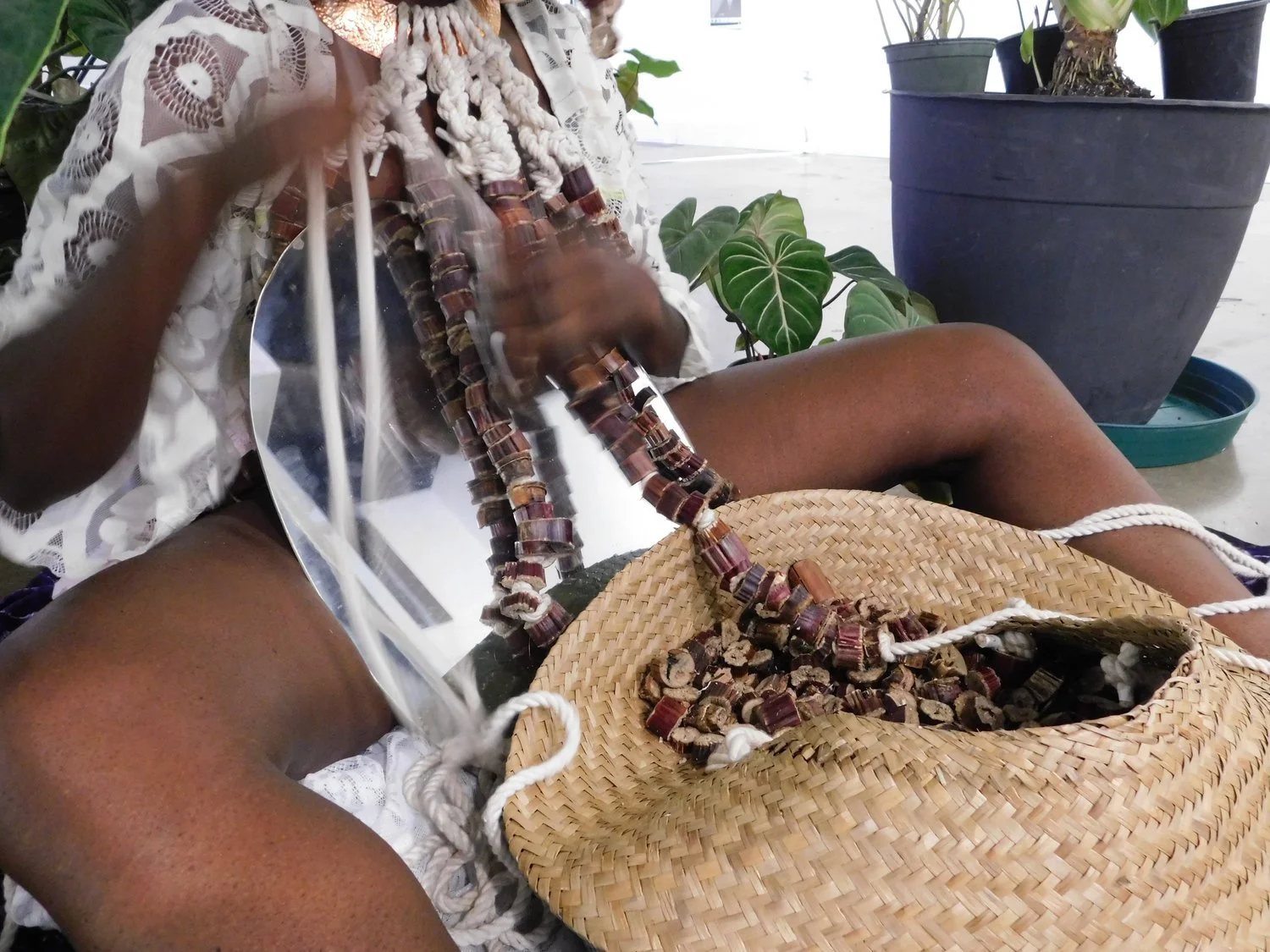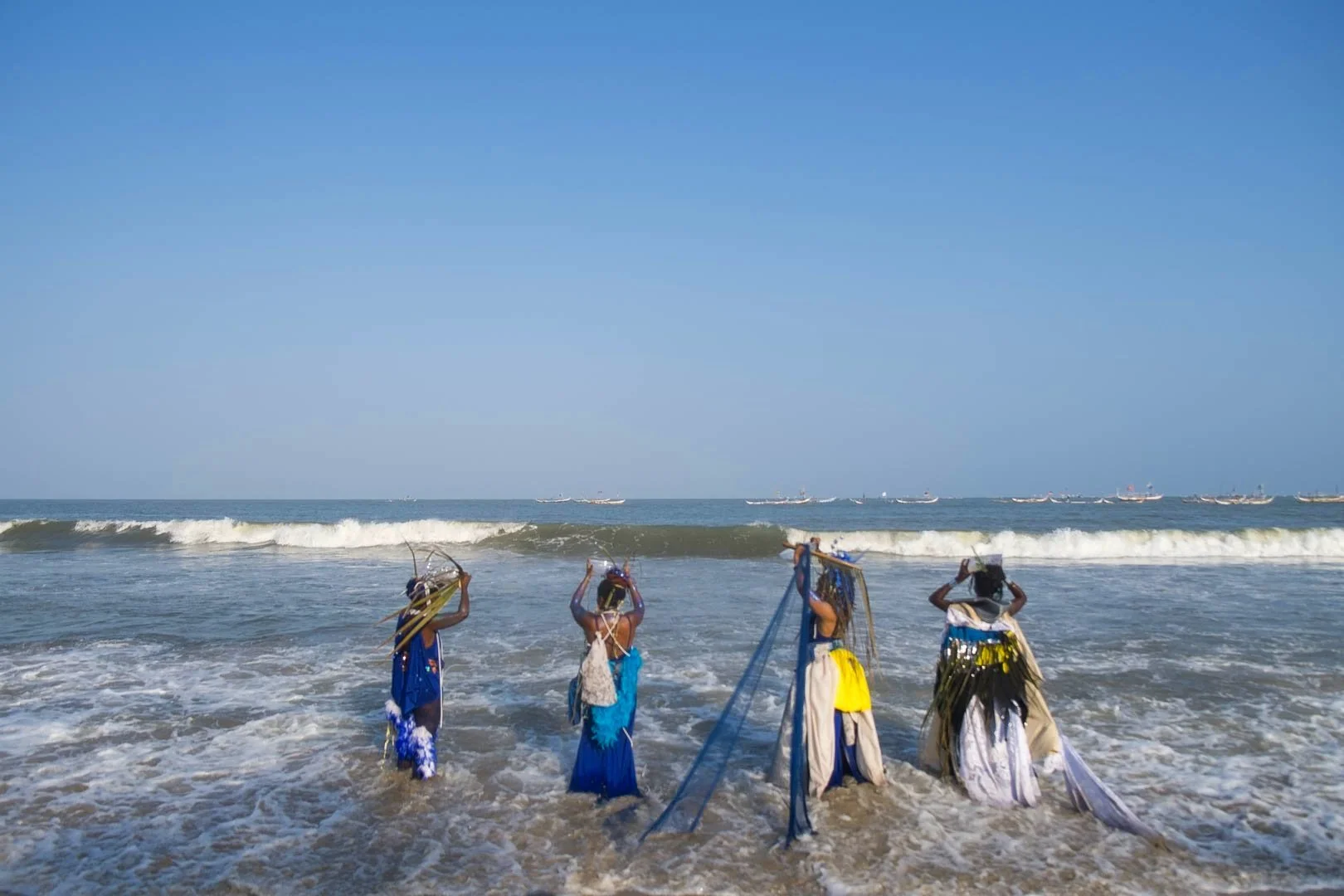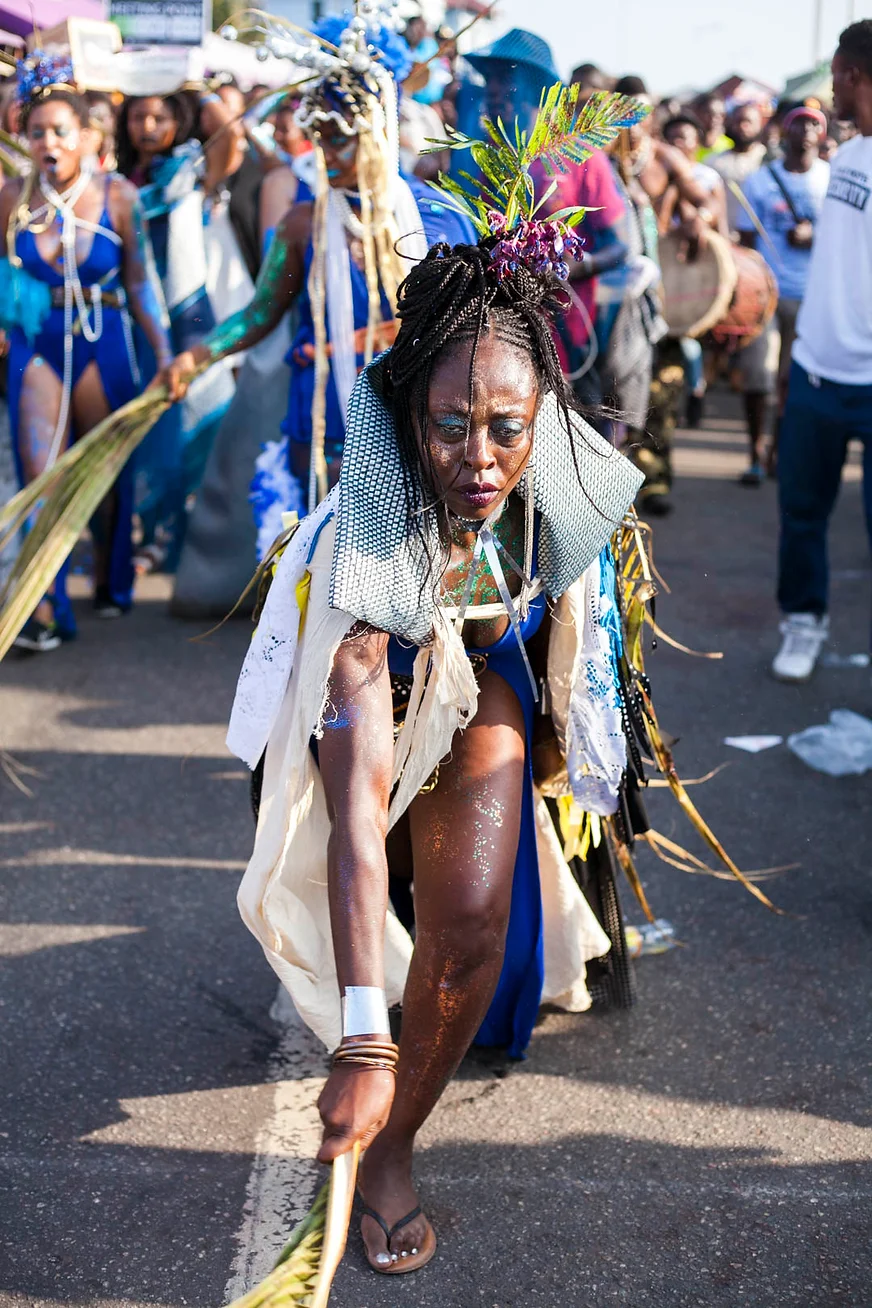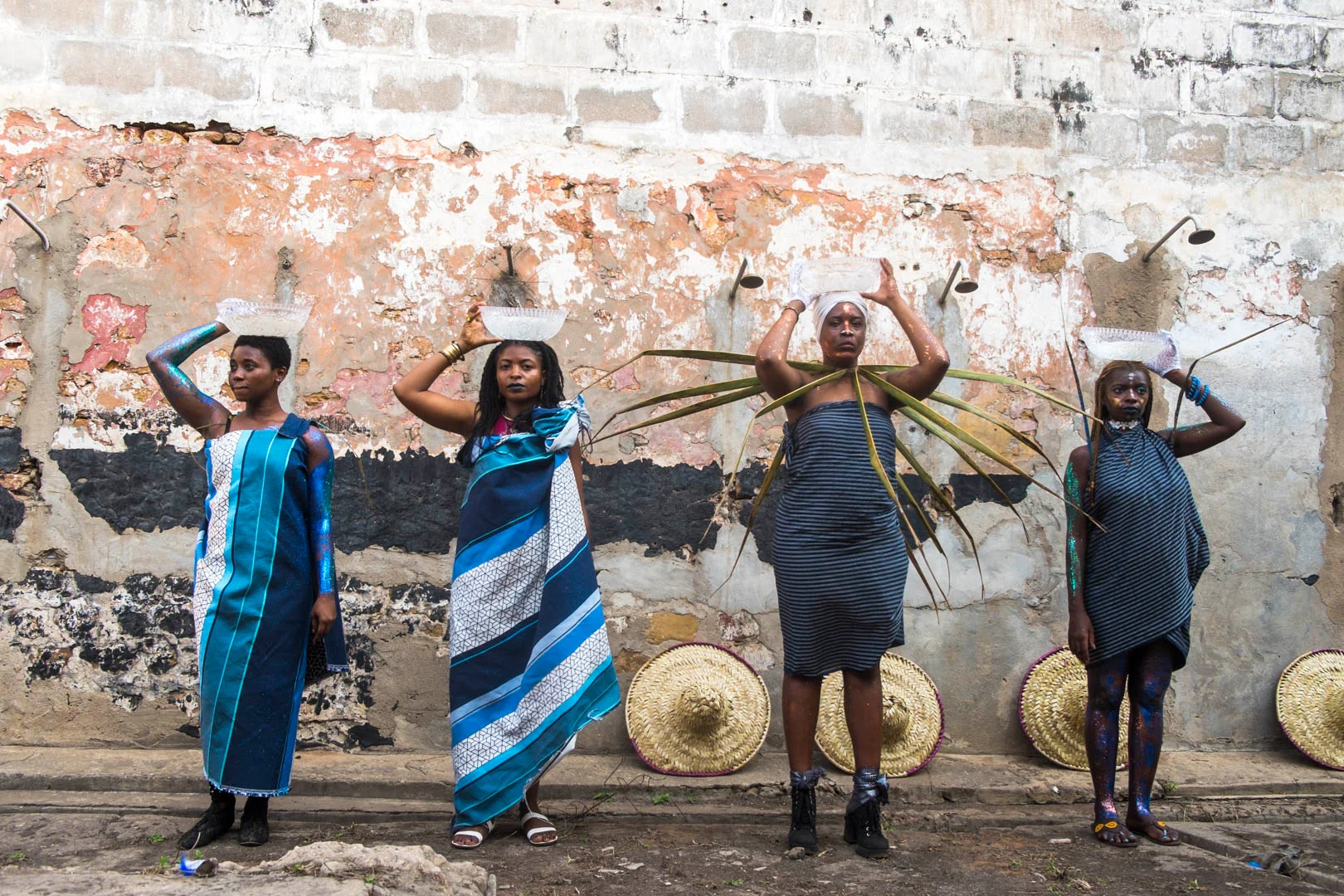Pray for Rain (series), 2024-ongoing. bicolor sorghum, abaca, okra, raindrops
Pray for Rain is a 28 piece work, a series of visceral snapshots of Earth in her process of reformation. Made with bicolor sorghum sourced from Northern Ghana, okra grown in Virginia by the artist and imprinted with raindrops, this work forges its botanical material from the of course trails mapped by the ecologies of African migration. This work suggests new ways working with physical and ephemeral labour of “the African”(spiritual) body as it and considers new fertile forms in the specter of Africanfuturism/-jujuism.
Eaten Earth of the Self Possessed I, 2023. bicolor sorghum, sugarcane sheath, holy basil, okra.
An ongoing series of work that connects African migration, the quest for self-possession and a metaphorical turn towards geophagy (earth-eating) to achieve it.
This series departs from Rana Hogarth’s text Medicalizing Blackness: Making Racial Difference in the Atlantic World, 1780-1840 which, in part, confronts made-up “disease” cachexia africana (earth-eating/craving), which European physicians assigned exclusively to enslaved Africans . Where the physicians debated whether it was a mental illness or a mark of profound homesickness, this work repositions this tendency as an act of sovereignty. The textures of these works nod to masticated terrain.
Eaten Earth of the Self Possessed II, 2023. bicolor sorghum, sugarcane sheath, holy basil, okra.
Eaten Earth of the Self Possessed III, 2023. tracing paper pulp, holy basil, okra.
Ngo {palm oil}, installation view, 2023. Gallery 102, Washington ,D.C.
Ngo {palm oil} is an evolving transdisciplinary archive presented through film, installation, performance, and technology. It explores existential thresholds of natural elements connected to the ecologies of African migration. It includes stories researched and collected part fabulateddraws from collected stories and African cosmologies from the largest populations of Africans in the Washington DC Metropolitan (where I currently reside) area hail from Ethiopia, Nigeria, Ghana and Cameroon, respectively. It aims to highlight and reimagine forms of sacred embodiment within the performances of African land-based labor in the US.
Ngo I, II, III, 2023. Eaten Earth installation view. Corcoran Gallery of Art. palm oil, glass vials, nails, brass chain, red sugar cane.
To Catch a Mirage (in 21 days) (2022),
A video installation that explores the body as a witness to and as a vessel for transformation. a research-informed, mixed media installation centers my body as a data gathering instrument.
The video it studies 21 days in Praia as a temperate, immersive technology for embodied transformation, Reflecting on the 21 days in Praia, Cabo Verde, both works employ the number 21 as the essential algorithm for transformation. In the performance, 21 clay prayer vessels were collaboratively made, uttering 21 phrases. In the video, 21 clips capturing forms of (Cape Verdean) embodiment are layered at 21% opacity.
Black Body Radiation : Rescripting Data Bodies 2022-ongoing. performance trailer Dr. Ameera Kawash & Ama BE
Black Body Radiation : Rescripting Data Bodies 2022-ongoing. performance stills. Dr. Ameera Kawash & Ama BE
Black Body Radiation : Rescripting Data Bodies, 2024. Ars Electronica, installation view. Dr. Ameera Kawash & Ama BE.
bête noire, 2021 ephemera (red sugarcane beads, cotton rope , copper choker, nails)
bête noire, 2021 durational performance (stills)
bête noire is a two day durational performance centered on sugarcane (“ahwedeɛ” in Twi), as both delight and vice. Using handmade beads made of black (red) sugarcane as a reference to African and Indigenous flesh, blood and bone, the performance interrogates commodification as it intercedes on behalf of the plant’s sacred nature. bête noire invites the public to act as co-intercessors through repetitive acts of adornment.
Pitaya (2019-2021),
A performance recorded in front of the dilapidated remains of a Portuguese colonial building in the African island nation of São Tomé, Pitaya speaks to the ecologies of migration and the subtle disorientation of presence, palette and personhood in mundane moments.
Set within the textures of an extended moment, its layers gently tease out the frays of linear concepts of place and presence. The performance film speculates a time-collapsed reality consisting of visual whispers, ancestral realms, multidimensional migrations, superimposed flora, and sonic fauna.
African Body Snatchers, 2017, performance (stills) Chale Wote Festival, James Town, Accra, Ghana
A performance by Ama BE, Ayana Evans, Megan Livingston, and Tsedaye Makonnen, African Body Snatchers was a TransAtlantic performance that carried water from the James River in Jamestown, Virginia to the shores of James Town, Accra, Ghana. The performance returns “source to source”, using waters and the act of water-bearing as a medium for divination, confrontation, and reconciliation.



